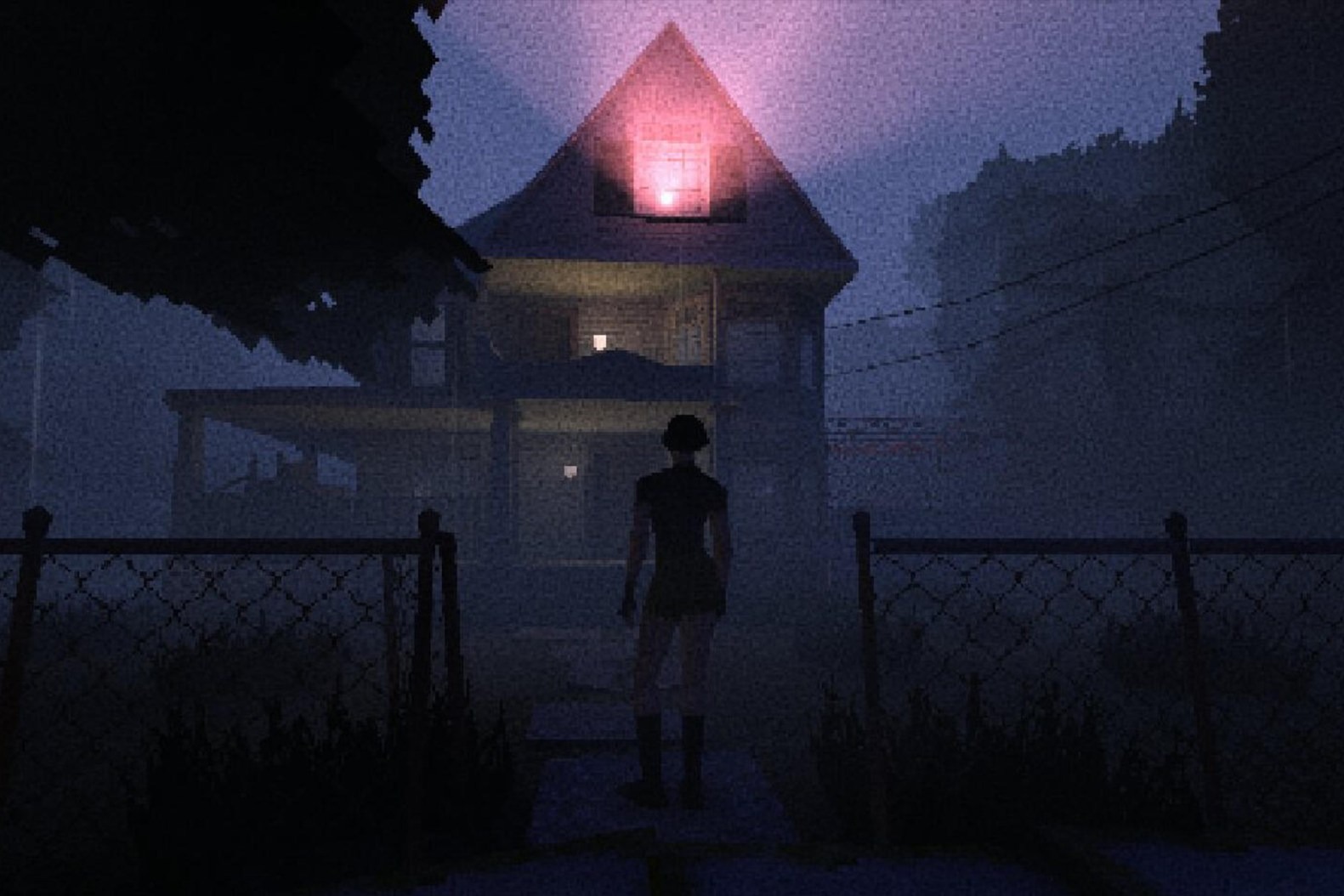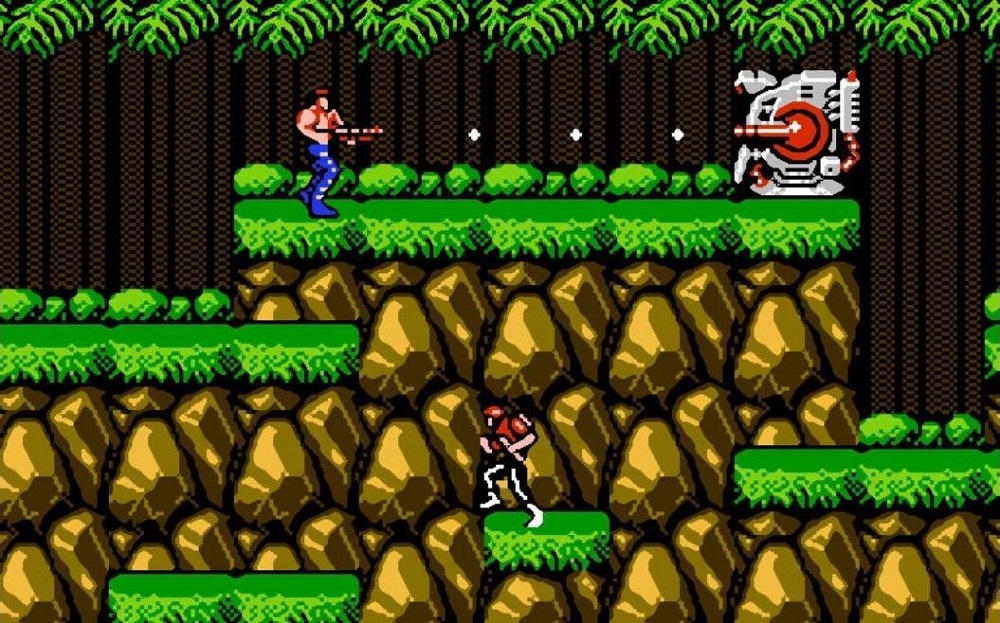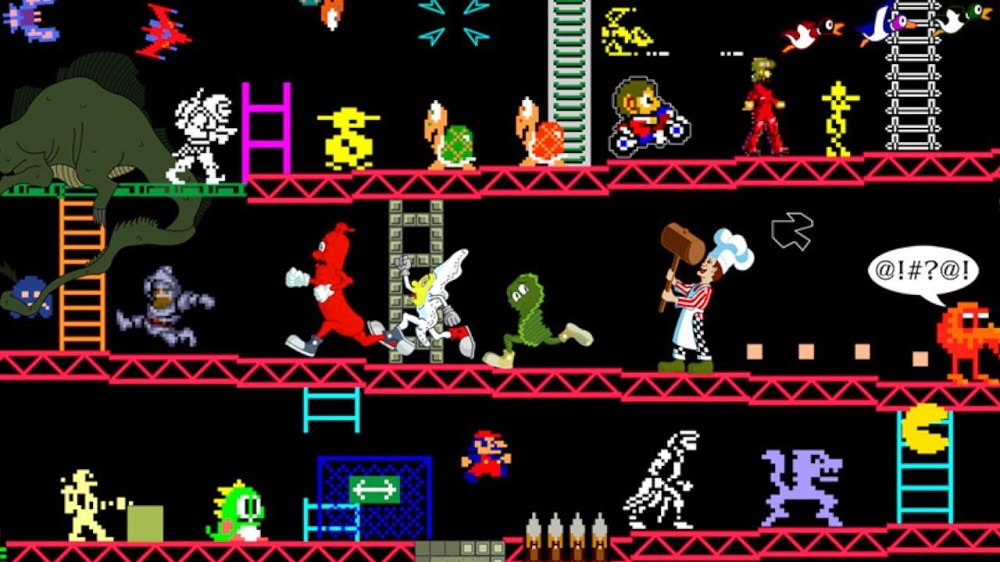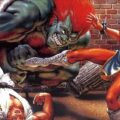Before ultra-realistic graphics and VR scream-fests, horror in games was crafted from imagination, atmosphere, and limitation.
The crackle of lo-fi audio. The flicker of pixelated shadows. The eerie silence between 8-bit heartbeats.
Retro horror games didn’t rely on jump scares or cinematic spectacle — they whispered fear into your imagination. Every shadow could be a monster, every distorted sound a scream.
As Halloween approaches, Oldies Nest revisits the roots of fear in gaming. Here are the 10 retro horror games that still send chills down spines — eerie masterpieces that defined how we experience terror in interactive form.
1. Sweet Home (1989 – NES, Capcom)
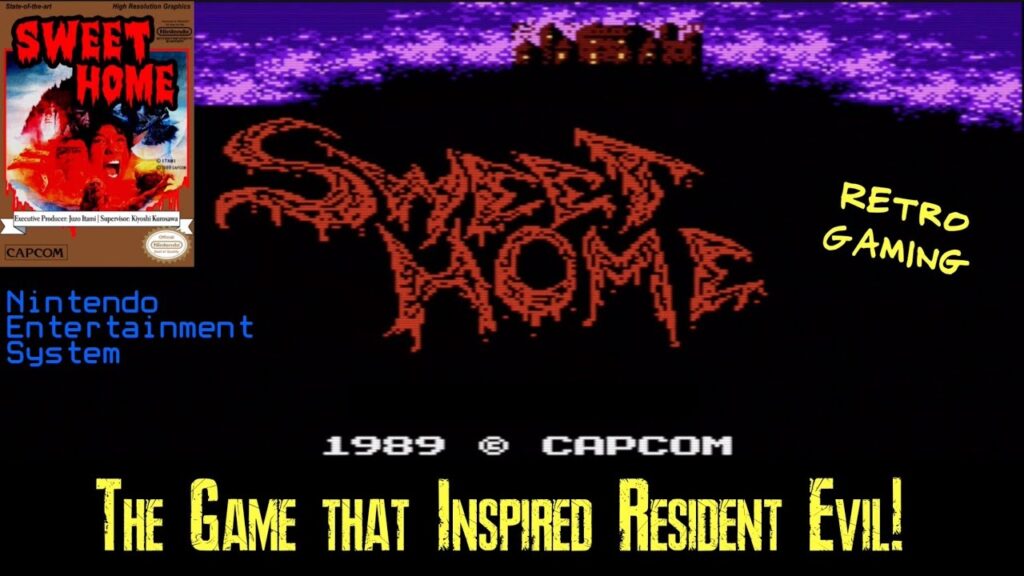
Before Resident Evil, there was Sweet Home.
Based on a Japanese horror film of the same name, this RPG introduced survival horror elements years before the genre existed: limited inventory, item management, and an isolated mansion filled with grotesque secrets.
- Why it’s scary: The constant fear of death (permanent character loss) and haunting music create unrelenting tension.
- Legacy: Directly inspired Resident Evil (1996) — even sharing puzzle mechanics and mansion design.
- Fun Fact: It was never officially released outside Japan, but fan translations made it accessible through emulation.
This kind of rediscovery through ROMs and fan efforts ensures lost classics like Sweet Home survive beyond their era.
2. Alone in the Dark (1992 – PC, Infogrames)
The godfather of 3D horror.
Alone in the Dark pioneered cinematic camera angles, polygonal characters, and pre-rendered backgrounds — a formula that Resident Evil would later refine.
- Setting: A haunted mansion in 1920s Louisiana.
- Innovations: Early survival horror gameplay, puzzle-solving, and Lovecraftian storytelling.
- Fear Factor: Claustrophobic movement and fixed camera shots make players feel constantly vulnerable.
Even today, its low-poly visuals and haunting piano theme remain deeply unsettling — proof that atmosphere trumps fidelity.
3. Clock Tower (1995 – Super Famicom, Human Entertainment)
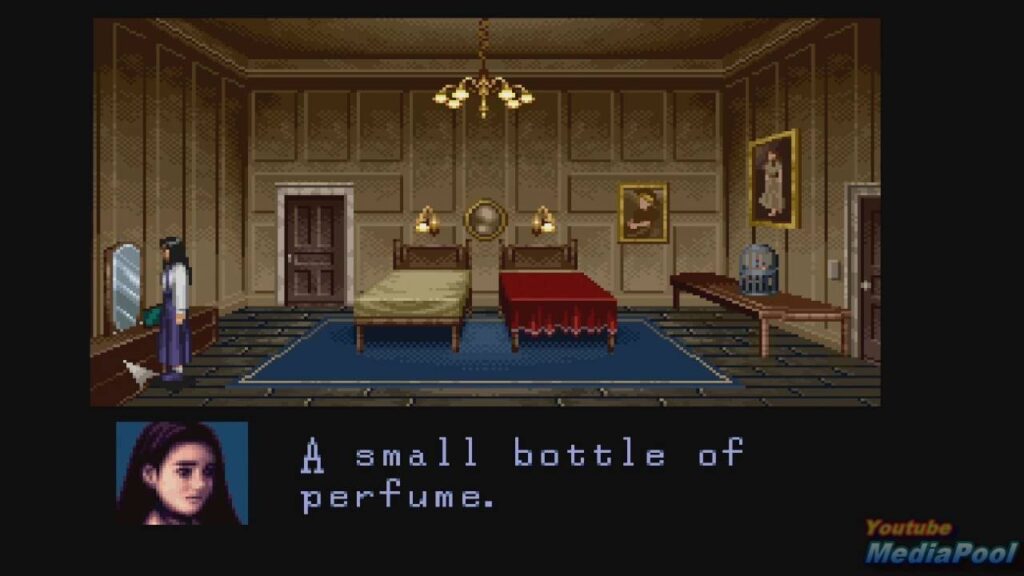
Pure psychological dread.
You play as Jennifer, a young orphan trapped in a gothic mansion while being hunted by the infamous Scissorman — a childlike killer wielding giant shears.
- Mechanics: Point-and-click exploration with no combat — only hiding and running.
- Tone: Oppressive, slow, and relentlessly suspenseful.
- Influence: Inspired the chase sequences of later horror hits like Haunting Ground and Outlast.
The grainy visuals and echoing footsteps evoke a fear that’s more mental than visual. Clock Tower proved horror doesn’t need blood — just the sound of scissors closing behind you.
4. Resident Evil (1996 – PlayStation, Capcom)
The mansion. The zombies. The creaking doors. The typewriter save system.
Resident Evil didn’t just define a genre — it resurrected it.
- Core Concept: Explore a biological research facility gone wrong, balancing ammo conservation and puzzle-solving.
- Scariest Moment: The first zombie slowly turning its head toward the camera — a moment that burned itself into gaming history.
- Legacy: Spawned an entire industry of survival horror.
The game’s use of fixed angles, tank controls, and eerie soundscapes shows exactly what we discussed in The Music of Retro Games: Chiptune Power — that tension can be amplified through minimalist sound design and silence.
5. Silent Hill (1999 – PlayStation, Konami)
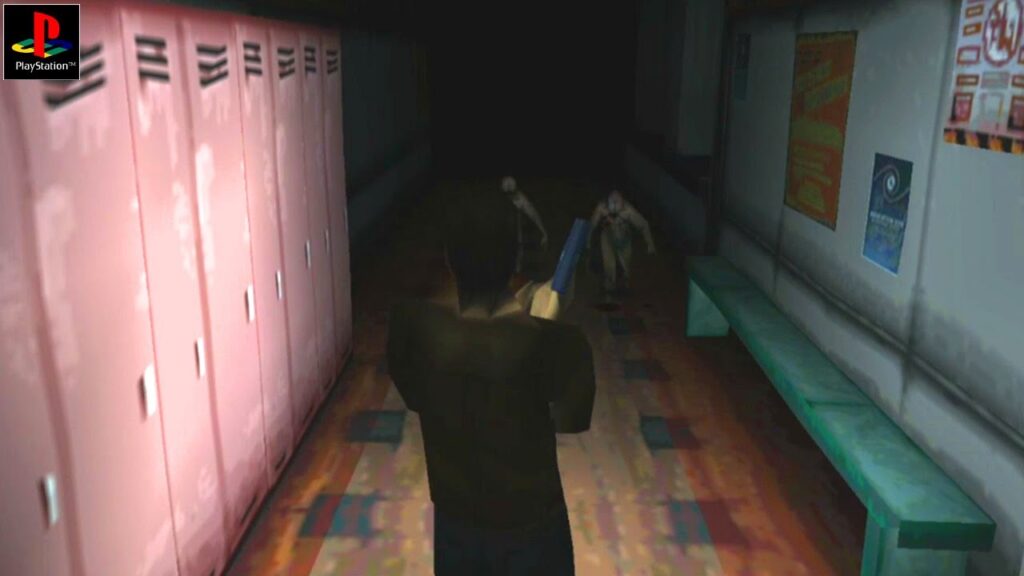
Where Resident Evil frightened you with monsters, Silent Hill terrified you with psychology.
- Setting: A fog-covered ghost town filled with shifting realities.
- Mechanics: Radio static warns of danger, forcing players to listen rather than see.
- Impact: Established psychological horror in games, blending trauma, guilt, and surrealism.
The low draw distance caused by PS1 limitations became a creative weapon — the fog itself a tool of fear.
Even today, its oppressive atmosphere feels inescapable, like a nightmare that refuses to end.
6. Splatterhouse (1988 – Arcade/TurboGrafx-16, Namco)
Long before gore became mainstream, Splatterhouse reveled in it.
You play Rick, a masked hero fighting through grotesque abominations to rescue his girlfriend — a sidescroller dripping with 80s slasher influence.
- Style: Combines Evil Dead campiness with pixelated brutality.
- Notable Feature: The “Terror Mask” predates Jason Voorhees’ hockey mask aesthetic.
- Cultural Impact: One of the first games to spark censorship debates due to its violent content.
This game is retro horror in pure arcade form — loud, gory, and unapologetically fun.
7. Castlevania (1986 – NES, Konami)
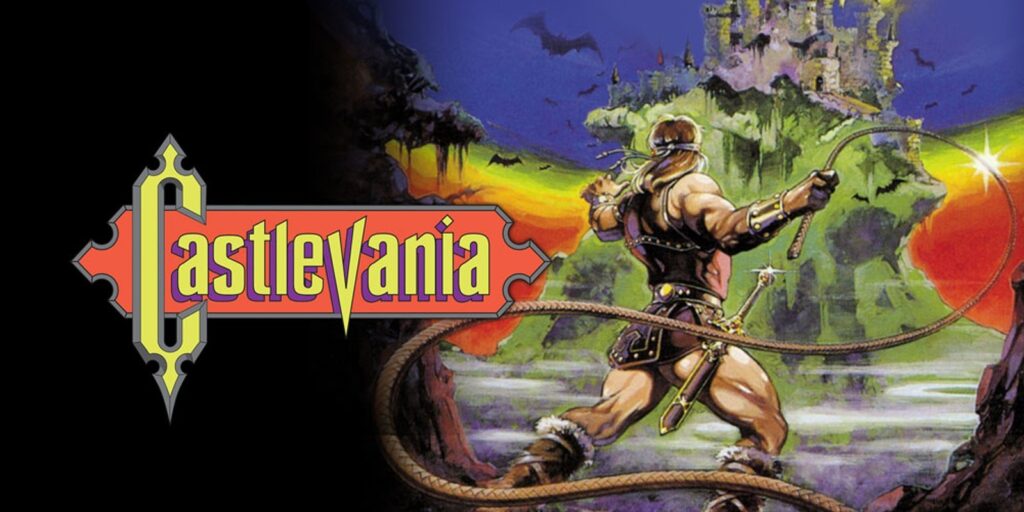
Not traditionally “horror,” but undeniably gothic.
You play Simon Belmont, a vampire hunter storming Dracula’s castle armed with a whip and faith.
- Atmosphere: 8-bit gothic architecture, pipe organ music, and eternal night.
- Design: Platforming precision meets monster-slaying rhythm.
- Why it works: Its simplicity fuels immersion — it’s not scary, it’s heroic horror.
As explored in Pixel Art: A Lasting Legacy of Retro Gaming, Castlevania’s pixel artistry turned limited sprites into eternal style — every candle, bat, and archway dripping with mood.
8. Haunting Starring Polterguy (1993 – Sega Genesis, EA)
A twist on horror — where you are the ghost.
You play as Polterguy, haunting a greedy family out of their mansion by possessing furniture, TVs, and even toilets to scare them away.
- Tone: Comedy-horror with surreal visual gags.
- Gameplay: Mix of puzzle-solving and timing.
- Why it’s unique: Subverts the horror formula by letting players be the terror.
Even today, it stands out for creativity — proof that horror can make you laugh and jump at the same time.
9. Fatal Frame (2001 – PlayStation 2, Tecmo)
Okay, slightly outside the 16-bit era, but too important to ignore.
Armed only with a Camera Obscura, you capture spirits by photographing them — an act that turns the player’s fear into weaponry.
- Design: First-person perspective without guns or combat.
- Emotion: Deeply personal, quiet, and reflective.
- Cultural Impact: Merged Japanese folklore with survival horror mechanics.
The game’s minimal UI, ambient dread, and realism created a timeless formula — it feels both retro and modern, bridging generations of horror design.
10. Eternal Darkness: Sanity’s Requiem (2002 – GameCube, Nintendo)
Another slightly newer title, but essential to close this list.
Nintendo, of all companies, delivered one of the most mature horror games ever made. Eternal Darkness didn’t just scare you — it lied to you.
- Mechanic: The “Sanity Meter” caused hallucinations — fake system crashes, missing saves, broken screens.
- Narrative: Lovecraftian story spanning 12 playable characters across centuries.
- Why it’s iconic: It shattered the fourth wall, making fear personal and unpredictable.
The blending of cosmic horror and psychological manipulation made Eternal Darkness one of the smartest horror experiences in gaming history.
The Common Thread: Fear Through Limitations
From 8-bit shadows to polygonal nightmares, retro horror mastered the art of suggestion over spectacle.
- Sweet Home and Clock Tower proved tension thrives in silence.
- Resident Evil and Silent Hill turned hardware constraints into atmosphere.
- Splatterhouse and Haunting balanced gore and humor with charm.
These games didn’t just scare — they inspired generations of developers to use creativity, not graphics, as their main weapon.
As Oldies Nest often says: “Retro horror didn’t show fear. It let you imagine it.”
Conclusion: A Season for Shadows
Every October, gamers dust off their consoles, dim the lights, and return to these classics — not just for nostalgia, but for purity.
Retro horror is slow, deliberate, and thoughtful. It’s the sound of footsteps echoing in empty halls. The dread of what you can’t see. The thrill of uncertainty.
These games are a reminder that fear, like good storytelling, doesn’t age — it evolves. And as long as we preserve them, as we’ve done through projects like those in Retro Game Preservation, these nightmares will never die.
So this spooky season, skip the new releases for a night. Pick up a controller, load a ROM, and let the ghosts of gaming past whisper their stories once more.
